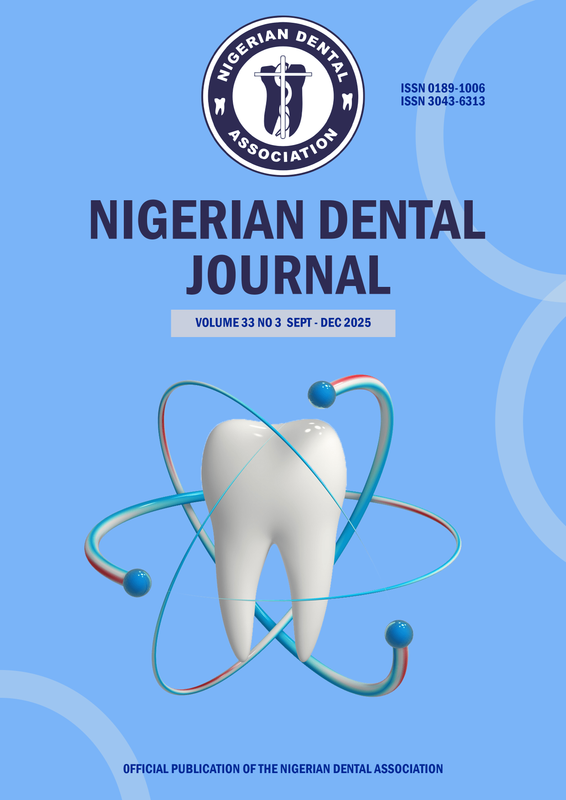Cervical vertebrae staging in pre-orthodontic patients in Benin City, Nigeria
DOI:
https://doi.org/10.61172/ndj.v21i1.64Keywords:
cervical vertebrae, staging, orthodonticsAbstract
Objective: To determine the prevalence of the various stages of skeletal maturation of the cervical vertebrae in pre-orthodontic patients in Benin City, Nigeria.
Method: The first six cervical vertebrae of 105 untreated orthodontic patients attending the clinic of the University of Benin Teaching Hospital were assessed on the cephalometric radiograph to determine the stages of maturation. Correlations between age, gender, type of malocclusion and skeletal maturation stages were determined using the software SPSS (version 16). Significant values of P<0.05 were applied were applicable.
Result: The average age of participants was 14±1.5 years with an almost equal gender distribution. Cervical vertebrae maturation (CVM) stage 3 was the most frequently occurring with 26.7% of the sample population. This was also seen mostly in the 11-yearold age group. The least frequently reported was CVM stage 1 with 5.7%. According to dento-skeletal patterns, CVM stage 3 was most prevalent in bimaxillary proclination with (29.3%). Others include mandibular retrusion, maxillary protrusion and skeletal 2 with 26.3%, 25% and 17.2% espectively. Males showed a higher distribution in the CVM stage 3 than females. There was also a significant association between age and Cervical maturation, P<0.05.
Conclusion: Cervical Maturation stages 1-6 were identified in pre-orthodontic patients aged 7-21-years. Stage 3 was the most frequently occurring.CVM stage and is seen more in 11-year-old-males. Females demonstrated a higher number in CVM stages 4 and 5. The correlation coefficient between age and CVM was 0.86 (P<0.05) for stage 3.
Downloads
Downloads
Published
Issue
Section
License
Copyright (c) 2014 I.N. Ize-Iyamu

This work is licensed under a Creative Commons Attribution 4.0 International License.
Open Access Statement
- We became fully Open Access since January 2023.
- Our new and archived materials are available free of charge on open basis and under a Creative Commons license as stated below.
Copyright statement
Copyright © 1999 The authors. This work, Nigerian Dental Journal by Nigerian Dental Association is licensed under Creative Commons Attribution 4.0 International License.

